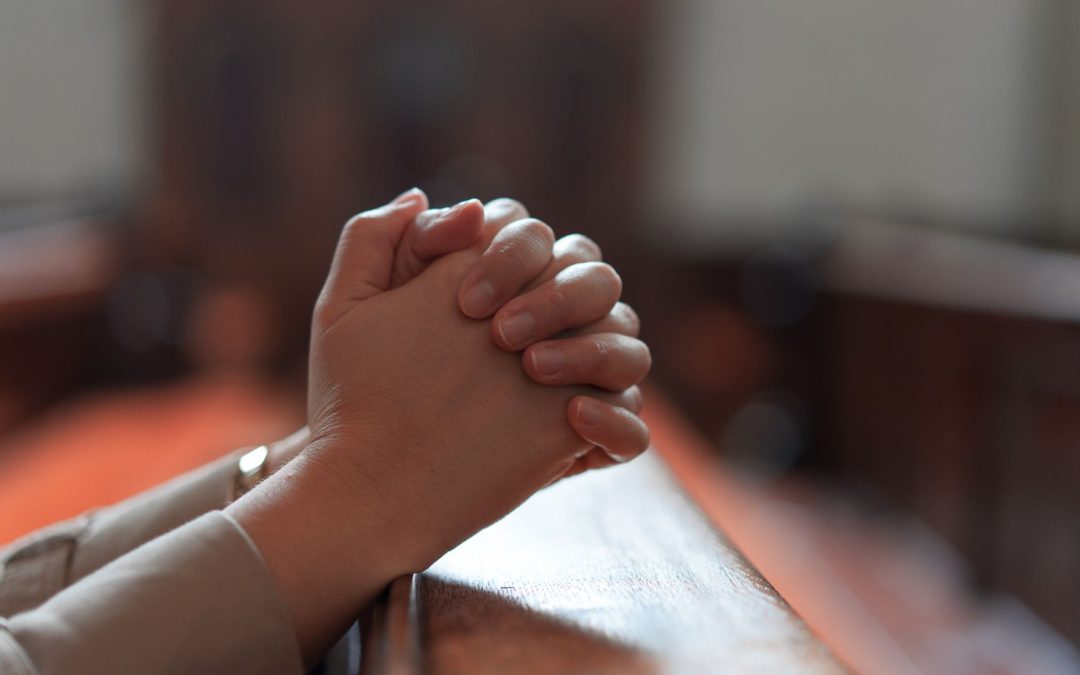Ever been at a formal social event and found yourself wondering, “What do I do with my hands?” If not, count your blessings. A lot of people have this experience of feeling tremendously awkward in a social setting, simply for not knowing what to do with their hands.
Although I cannot advise anyone what to do with their hands at a party, we Catholics have an answer for what to do with our hands at Mass: we join them together when we pray. Cradle Catholics learn this prayer posture as children, even before they have figured out which shoulder to touch first when making the sign of the cross. (It’s left, then right, by the way.) Still, when we come to Mass, we might see people doing all sorts of things with their hands, and we might see all sorts of ways of folding them.
The Church actually specifies what we should do with our hands when we pray. First, let me give you the “what,” and then I’ll turn to the “why.”
What
When we pray, especially during the Mass and other liturgies, we are to have our hands joined together at the palm, with our fingers extended, and with our right thumb over our left thumb. That means that our fingers are not interlocking—we aren’t clasping our hands, but joining them. See example below:
(Prayer hands emoji, not a high five emoji)
Don’t take my word for it. It’s actually explained in one of the liturgical books of the Church, called the Ceremonial of Bishops: “When it says ‘with hands folded,’ it is to be understood in this way: palms extended and joined together in front of the breast, with the right thumb over the left in the form of a cross” (Ceremonial of Bishops [1985] #107, n.80).
So, now we know what to do with our hands. We hold them joined together in the prayer position.
Obviously, that is not the only respectful way of holding our hands during Mass. Clasping them with interlocking fingers is common and respectful, but it’s always best to follow the Church’s recommendations when it comes to liturgy. To understand the reasons why the Church recommends us to hold our hands flat together in prayer, we have to turn to a little history of the gesture.
Why
Cardinal Ratzinger (before he became Pope Benedict XVI) wrote a magnificent book called The Spirit of the Liturgy. It’s pretty much one of the best books ever. Many Catholics instinctively know that there is more going on at Mass than meets the eye, that gestures and words have deeper meanings, that the Mass is full of symbols. Ratzinger gets into those symbols, the deeper meanings of what we do at Mass. I highly recommend it. But be careful, it might change your life.
Anyways, in The Spirit of the Liturgy, Ratzinger explains the origin and meaning of praying with our hands joined:
“A later development was the gesture of praying with hands joined. This comes from the world of feudalism. The recipient of a feudal estate, on taking tenure, placed his joined hands in those of his lord—a wonderful symbolic act. I lay my hands in yours, allow yours to enclose mine. This is an expression of trust as well as of fidelity.” (Ratzinger, The Spirit of the Liturgy, 204)
That is what priests do during their ordination. When a priest promises obedience and respect to his bishop, the priest places his joined hands in front of himself, and the bishop places his own hands over the new priest’s hands. Trust and fidelity.
When we pray with our hands joined flat, pointing upward, we are placing our hands in the invisible hands of God. Ratzinger says:
“This, then, is what is meant when we join our hands to pray: we are placing our hands in his, and with our hands we place in his hands our personal destiny. Trusting in his fidelity, we pledge our fidelity to him.” (Ratzinger, The Spirit of the Liturgy, 205)
We join our hands together, flat, with fingers extended, right thumb over left, because the Church asks us to do so. The Church asks it of us in order to give us one more way to show our trust in the Lord who cares for us. With trustful obedience to the Lord, we place our hands in his when we pray, knowing that “the Lord cares for those who trust in him” (Nahum 1:7).


